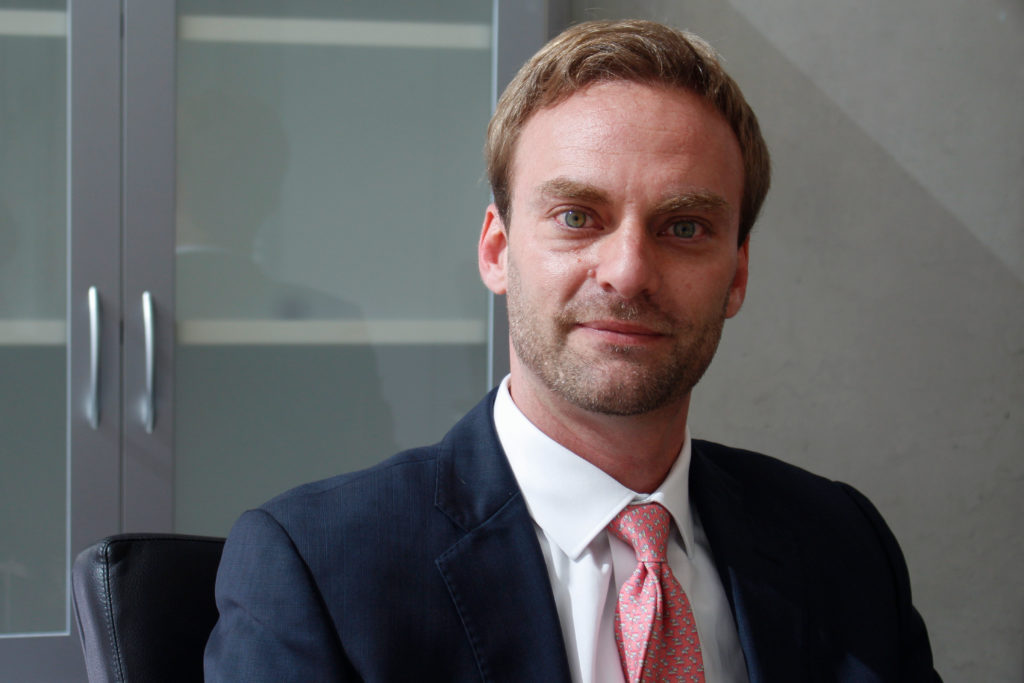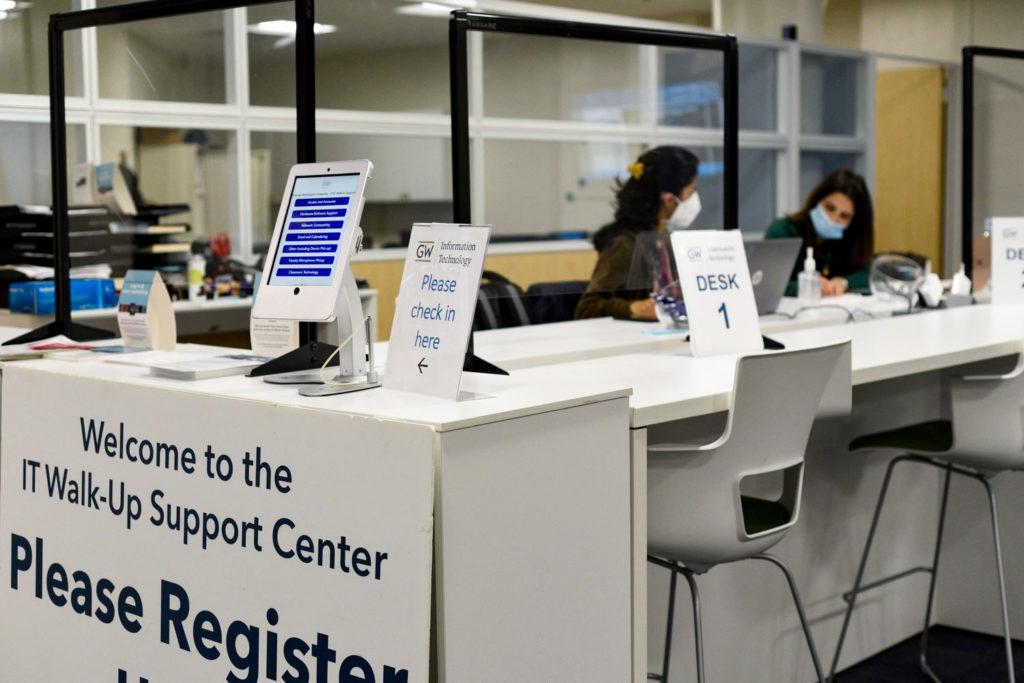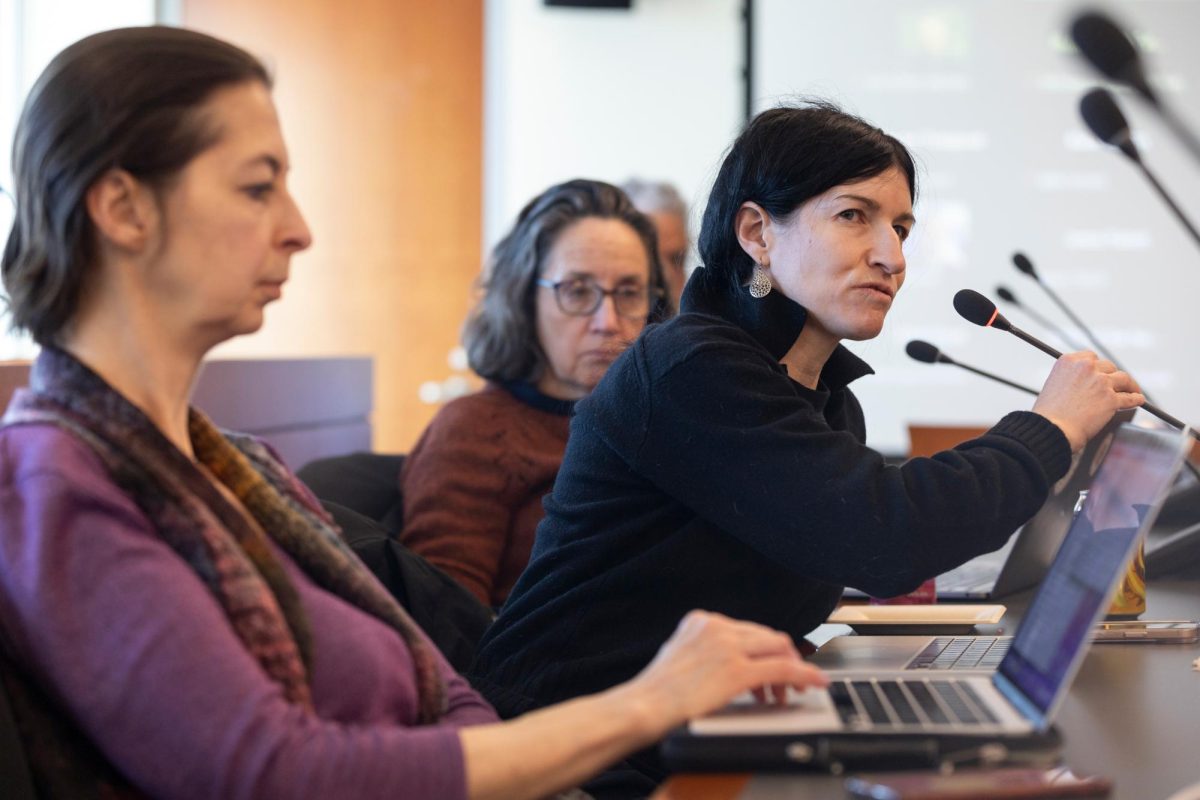GW’s first-ever head of financial planning says he has worked to improve “intentionality” and “accuracy” in the University’s budget processes in his first few months.
Jared Abramson, who began serving as the inaugural vice president for financial planning and operations in July, said his twin focuses will help officials use GW’s existing financial resources to fund the priorities enumerated in GW’s next strategic plan. Four faculty-led committees established in September – on faculty, graduate education, undergraduate education and research – are leading the development of GW’s next strategic plan.
“The recommendations from the strategic planning committees will really help us to focus and move more toward a philosophy around allocating resources for strategic priorities, rather than allocating budgets for things that have always been budgeted for,” Abramson said.
Each of the committees released interim reports earlier this month detailing draft recommendations and principles. The Board of Trustees will approve the plan at its summer retreat in June.
Abramson said prioritizing intentionality – aligning GW’s financial decisions with the University’s strategic priorities – in budget decisions has led to significant improvements on campus, like $10 million in infrastructure and safety projects trustees approved this summer.
“There’s always going to be a need for us to be intentional about making sure we have resources to continuously renew and refresh our campus and invest in safety and experience,” he said.
Internal enrollment models, which were obtained by The Hatchet last year, revealed that administrators’ plans to reduce the undergraduate population by nearly 20 percent while increasing the proportion of STEM students, dubbed the 20/30 Plan, could cost between $8 million and $36.2 million a year. Abramson said the school’s revenue estimates are “fluid” numbers.
Some faculty have raised concerns about the cost associated with the enrollment changes. Faculty criticized administrators this month for putting the plan into motion in violation of “established principles of shared governance.”
“I think that just speaks to setting targets, watching and measuring what the impact is in terms of positive outcomes, and also the impact in terms of cost that we need to be able to afford,” Abramson said. “So we’re going to be doing this in real time, day in, day out, and every budget cycle.”
He added that he is working with officials to make each major budget decision through a “data-driven model” as part of his efforts to improve accuracy in financial projections. Under Abramson’s tenure, the University’s business intelligence team has left the Division of Information Technology and now reports to him, which has enabled financial planning staff to visualize financial data for deans and other administrators and transform information into “actionable metrics,” Abramson said.
“It’s being able to have a precise forecast and models of when we are investing, and then being able to deliver on them – having an anticipated and improved level of spending for each initiative and then living within our means while we’re still trying to accomplish our goals,” he said.
Abramson said he has spent much of his first few months meeting with officials to collect feedback and build stronger relationships. Abramson said his biggest challenge since joining has been introducing and managing change because change is sometimes met with “fear and “resistance,” but developing relationships with administrators has helped increase understanding across offices.
“Being able to understand and learn [from] and listen to the community is the only way that you’re going to be able to have a meaningful impact and be able to create the collegial relationships that you need,” he said.
Mark Diaz, the executive vice president and chief financial officer, said Abramson has created a focus on the “value proposition” of the University.
“He’s looking at both operations, how to plan best to optimize our resources for those operations and having a rubric or an apparatus that helps inform those that are managing the operations,” Diaz said.
He added that Abramson has brought a “data-driven paradigm” to the University, which has informed top-level decision-making.
“He’s able to really converge operational acumen with financial management – having an idea of what it takes from an operational standpoint and figure out exactly how to optimize our resources,” Diaz said.
He added that moving business intelligence away from the IT division into Abramson’s purview has helped each of GW’s 10 schools and colleges achieve “desired outcomes” more easily by increasing accessibility to relevant data sets.
“Now having business intelligence out of [IT] and now closer to those that are making the decisions can only help us hopefully achieve the results that we want,” Diaz said.
Jared Gans and Parth Kotak contributed reporting.








